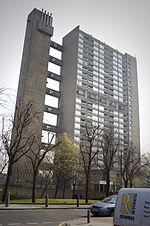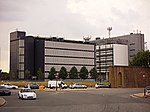Poplar Hospital

Poplar Hospital was a medical facility opened in East India Dock Road in London, England, in 1855. It was opened under the patronage of Samuel Gurney, MP to treat people who had suffered injuries in the docks. The premises which were leased for the hospital were originally those of the East India Dock Tavern and then subsequently the Custom House.Under Sydney Holland's Chairmanship the Hospital was able to expand considerably in the late nineteenth century. Holland was well-known for his successful fundraising, for which he earned the nickname ‘Prince of Beggars’. In a four-year period Holland raised sufficient funds to enlarge the hospital from 36 to over 100 beds, improved the nursing care, and the hospital’s reputation.The hospital was repeatedly expanded to cater for more patients, only being closed in 1975. It was demolished in 1982. From the 17th to the early 19th Centuries, the British East India Company (EIC) maintained a hospital in the area known as Poplar Hospital. The hospital had been established in March 1628 as an almshouse for its mariners.
Excerpt from the Wikipedia article Poplar Hospital (License: CC BY-SA 3.0, Authors, Images).Poplar Hospital
Poplar High Street, London Blackwall
Geographical coordinates (GPS) Address Nearby Places Show on map
Geographical coordinates (GPS)
| Latitude | Longitude |
|---|---|
| N 51.511766666667 ° | E -0.00705 ° |
Address
Poplar High Street 261
E14 0BB London, Blackwall
England, United Kingdom
Open on Google Maps









